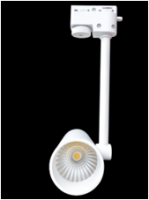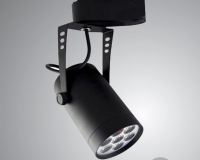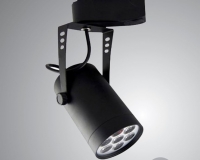As the price of hydro and natural gas continues to rise, making your home more energy efficient is a great way to help lower your monthly bills, while also creating a more comfortable and healthy living environment. Deciding what upgrades you need to tackle, however, can be tricky unless you know what to look for and how to remedy the issues you have.
If you feel a pro is not worth it for your home there are still benefits of doing your own energy audit. Here are the main areas you should be focusing on if you decide to do it yourself.First and foremost, hiring a professional to come in and do a full assessment of your home is the best way to find out where there are issues. A professional assessment will take three or more hours to conduct and costs between $300 to $500 depending on the size of your home. For larger homes and areas where tax credits are available for energy efficient upgrades, the benefits of going the professional route far outweigh doing it yourself.
Check for drafts around doors and windows
While every home needs to breathe, letting out conditioned inside air is not only a waste of energy but also a waste of money. Drafts around doors and windows are the biggest culprits for air leaks in most homes and are also the easiest to remedy.
To check for air leaks, do an inspection around each door and window inside and out. Look for large gaps and holes around the frames. Bigger drafts will be detectable by just holding your hand up around the outer edge of the door or window. You should also check that doors and windows close properly and that glass panes are sealed and not cracked or chipped.
A smoke test using a stick of incense will help find smaller leaks. This is done by closing all your doors and windows throughout your home, turning off any combustible appliances (such as your furnace and water heater) and turning on your bathroom and kitchen exhaust vents. As you slowly move the incense around the inside of your windows and doors watch to see if the smoke moves inwards or stays steady. If you detect movement there is a leak.
To fix drafts use spray foam and caulking to fill holes and cracks. Adding foam or rubber seals around doors and windows can also be beneficial. Doors and windows that don’t sit or close properly should be looked at by a professional.
You should also check for leaks around areas where pipes and cables, such as your gas and hydro lines, enter your home and around the foundation of your property.
WATCH: Finding air leaks around your home
Check if you have enough insulation in your walls and attic
Insulation helps keep outdoor air from getting inside your home and conditioned indoor air from escaping. This is achieved by trapping pockets of air and slowing down the in/out process. Having the right amount of insulation in your walls and attic will cut your energy bills and make your home more comfortable in the summer and winter months.
If you have access to your attic go up and take a look. If you can see the top of your joists you don’t have enough insulation. An attic should have a minimum R-value (the measurement in which insulation is rated) between 50 and 60. This works out to about 16 inches of loose-fill insulation or three layers of R-22 rated batt insulation.
NOTE: It’s best to always wear a respirator mask, eye protection and gloves when entering an attic.
To find out if you have gaps in the insulation behind your walls (without opening them up and making a mess) you’ll need some special tools. An infrared thermometer, such as the one Ryobi makes for the iPhone, works like a laser pointer and allows you to detect the temperature of a specific spot on a wall. If there are drastically changing readings from the top, middle, and bottom of the wall there is most likely an issue with your insulation.
READ MORE: What you need to know about home insulation
A thermal imaging camera will give you a much more accurate reading of areas that are lacking insulation. These work by detecting cold and hot zones as you scan over the areas you’re checking. A device like the Flir One iPhone attachment, which was used to take the images below, lets you take photos and videos of the areas as you investigate and also gives a temperature reading.
If you find you are lacking insulation in your walls your best bet is to a call a professional to come and blow loose-fill insulation into your wall cavities. This is much cheaper and less messy than removing your existing drywall/plaster to completely replace the insulation you already have.
Other areas that can be easily insulated include light switches and receptacles on exterior walls, hot water pipes and duct work.
Inspect/service your home mechanical equipment
Having your heating and air conditioning system, as well as your hot water tank, serviced annually will keep them running more efficiently and help avoid premature failures.
Furnaces should be kept clear of items around them so they perform best. Vacuuming out the inside of your furnace and cleaning your furnace filter monthly (and replacing it every three months) can save you upwards of $50 a year, according to Dave Walton, director of home ideas at Direct Energy. Registers and air intake vents should be vacuumed out regularly and also be kept free from stuff blocking airflow around them.
Check the duct work coming from your furnace to determine if there are holes or gaps that need sealing. These problem spots can be sealed using special aluminum tape. Ducts that are rusty should be check by an HVAC professional.
READ MORE: What you need to know about furnace filters
If you have hot water baseboard heating each unit should be checked for leaks and rust. Electric baseboard heaters should be inspected and cleaned of any dust or lint accumulation.
Water heaters should be kept free of items around them for safety and performance reasons. They should be checked regularly for leaks and rust spots. Pipes to and from the water heater should be insulated so the unit doesn’t have to work as hard to heat the water. Tankless hot water heaters should be professionally inspected and cleaned annually.
Air conditioning units should be covered during the winter months to prevent leaves and other debris from getting inside. If debris has gotten into the unit, blowing it out with a leaf blower is the safest way to clean it out. The area around the unit should also be kept clear over the summer so it has proper airflow and no chance of anything getting sucked into the unit. Air conditioning units that are 15 years old or older should be replaced with a newer, more efficient model.
Sump pumps, water softeners, filtration systems, boilers, humidifiers and any other whole home equipment you may have should also be inspected as per the manufacturer recommendation.
Monitor your electricity usage
Monitoring your electricity consumption will let you know if there are any issues with your appliances or electronics. It will also help you detect any energy hogs, such as televisions and cable boxes, that waste power while even in standby mode. Using a device like the Blueline PowerCost monitor (available for free from some energy companies across Canada) or the neurio device allows you to watch your consumption and find ways to lower it, especially during peak hours.
Using power bars with timers or unplugging devices during peak hours can easily reduce your electricity consumption. Some municipalities also give rebates for upgrading appliances and electronic devices to Energy Star rated models. Areas around appliances like refrigerators, freezers and clothes dryers, should be kept cleaned so they run at optimal performance. Check the manufacturer recommendation of these devices for adjustments that can be made to use less energy.










































